
The almond is a species of small tree from the genus Prunus, cultivated worldwide for its seed, a culinary nut. Along with the peach, it is classified in the subgenus Amygdalus, distinguished from the other subgenera by corrugations on the shell (endocarp) surrounding the seed.
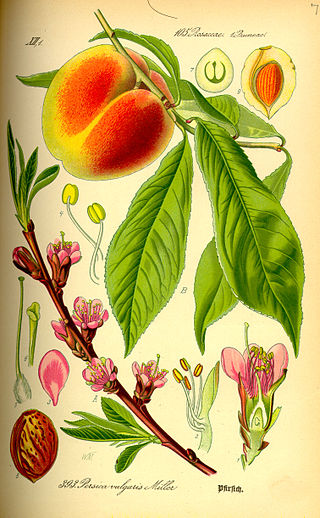
The peach is a deciduous tree first domesticated and cultivated in Zhejiang province of Eastern China. It bears edible juicy fruits with various characteristics, most called peaches and others, nectarines.

A cherry is the fruit of many plants of the genus Prunus, and is a fleshy drupe.

An apricot is a fruit, or the tree that bears the fruit, of several species in the genus Prunus.

A plum is a fruit of some species in Prunus subg. Prunus. Dried plums are most often called prunes, though in the United States they may be just labeled as 'dried plums', especially during the 21st century.

A prune is a dried plum, most commonly from the European plum tree. Not all plum species or varieties can be dried into prunes. A prune is the firm-fleshed fruit (plum) of Prunus domestica varieties that have a high soluble solids content, and do not ferment during drying. Use of the term "prune" for fresh plums is obsolete except when applied to varieties of plum grown for drying.

Prunus is a genus of trees and shrubs in the flowering plant family Rosaceae that includes plums, cherries, peaches, nectarines, apricots, and almonds. The genus has a cosmopolitan distribution, being native to the North American temperate regions, the neotropics of South America, and temperate and tropical regions of Asia and Africa, There are 340 accepted species. Many members of the genus are widely cultivated for their fruit and for decorative purposes. Prunus fruit are drupes, or stone fruits. The fleshy mesocarp surrounding the endocarp is edible while the endocarp itself forms a hard, inedible shell called the pyrena. This shell encloses the seed, which is edible in some species, but poisonous in many others. Besides being eaten off the hand, most Prunus fruit are also commonly used in processing, such as jam production, canning, drying, and the seeds for roasting.

The cherry blossom, or sakura, is the flower of trees in Prunus subgenus Cerasus. "Sakura" usually refers to flowers of ornamental cherry trees, such as cultivars of Prunus serrulata, not trees grown for their fruit. Cherry blossoms have been described as having a vanilla-like smell, which is mainly attributed to coumarin.
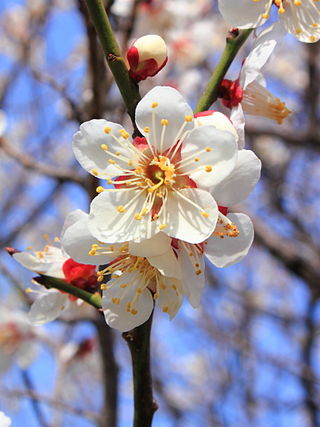
Prunus mume is a Chinese tree species classified in the Armeniaca section of the genus Prunus subgenus Prunus. Its common names include Chinese plum,Japanese plum, and Japanese apricot. The flower, long a beloved subject in the traditional painting and poetry of Sinospheric countries, is usually called plum blossom. This distinct tree species is related to both the plum and apricot trees. Although generally referred to as a plum in English, it is more closely related to the apricot. In East Asian cuisine, the fruit of the tree is used in juices, as a flavouring for alcohol, as a pickle, and in sauces. It is also used in traditional medicine.

Prunus spinosa, called blackthorn or sloe, is a species of flowering plant in the rose family Rosaceae. The species is native to Europe, western Asia, and regionally in northwest Africa. It is locally naturalized in New Zealand, Tasmania, and the Pacific Northwest and New England regions of the United States.

Prunus padus, known as bird cherry, hackberry, hagberry, or Mayday tree, is a flowering plant in the rose family. It is a species of cherry, a deciduous small tree or large shrub up to 16 metres (52 ft) tall. It is the type species of the subgenus Padus, which have flowers in racemes. It is native to northern Europe and northern and northeast Asia, and is grown as an ornamental in North America.

Prunus serrulata or Japanese cherry is a species of cherry tree that grows naturally in Japan, China, Korea, and Vietnam, and it also refers to a cultivar produced from Prunus speciosa, a cherry tree endemic in Japan. Historically, the Japanese have developed many cultivars by selective breeding of cherry trees, which are produced by the complicated crossing of several wild species, and they are used for ornamental purposes all over the world. Of these, the cultivars produced by complex interspecific hybrids based on the Oshima cherry are also known as the Cerasus Sato-zakura Group.

Prunus serotina Ehrh., commonly called black cherry, wild black cherry, rum cherry, or mountain black cherry, is a deciduous tree or shrub in the rose family Rosaceae. Despite being called black cherry, it is not very closely related to the commonly cultivated cherries such as sweet cherry, sour cherry and Japanese flowering cherries which belong to Prunus subg. Cerasus. Instead, P. serotina belongs to Prunus subg. Padus, a subgenus also including Eurasian bird cherry and chokecherry. The species is widespread and common in North America and South America.
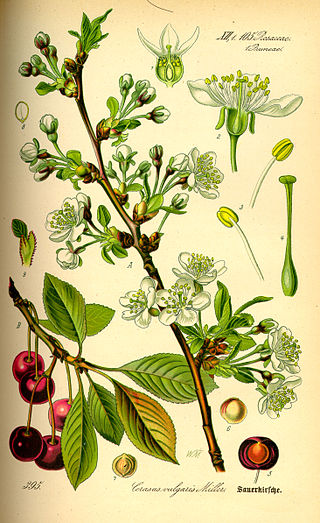
The marasca cherry is a type of sour Morello cherry known only from cultivation. It is reputed to attain its finest flavor when grown in coastal Croatia.
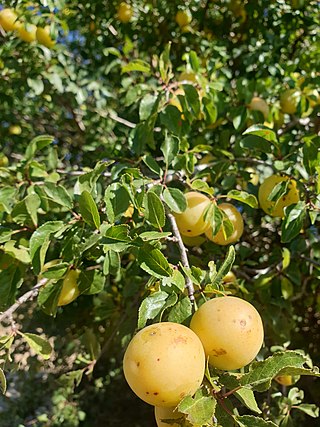
Prunus cocomilia is a species of plum commonly called Italian plum. It is native to Albania, Croatia, Greece, southern Italy, Montenegro, North Macedonia, Serbia, and western Turkey.
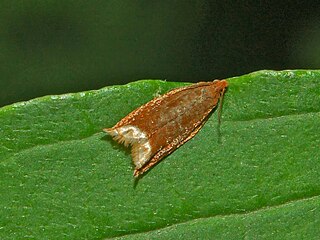
Ancylis selenana is a moth of the family Tortricidae. It is found from southern Sweden and Finland to France and Italy and to the Balkan Peninsula. Outside of Europe, it is found from Asia Minor to southern Siberia and Korea.
Ectoedemia mahalebella is a moth of the family Nepticulidae. It is found from the Czech Republic and Slovakia to the Pyrenees, Italy and Greece.

Prunus avium, commonly called wild cherry, sweet cherry or gean is a species of cherry, a flowering plant in the rose family, Rosaceae. It is native to Europe, Anatolia, Maghreb, and Western Asia, from the British Isles south to Morocco and Tunisia, north to the Trondheimsfjord region in Norway and east to the Caucasus and northern Iran, with a small isolated population in the western Himalaya. The species is widely cultivated in other regions and has become naturalized in North America, New Zealand and Australia.
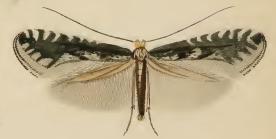
Parornix petiolella is a moth of the family Gracillariidae. It is known from Austria, Bulgaria, the Czech Republic, France, Germany, Hungary, Italy, Kazakhstan, Luxembourg, Moldova, Poland, Romania, the European part of Russia, Slovakia, Switzerland and Ukraine.

Coleophora prunifoliae is a moth of the family Coleophoridae. It is found from Scandinavia to the Pyrenees, Italy and Romania and from Great Britain to southern Russia.

















